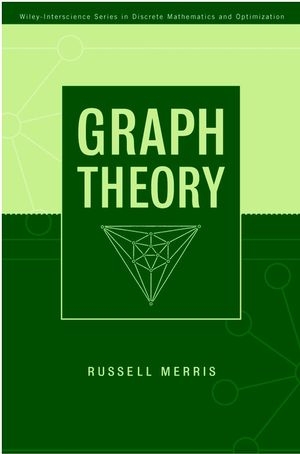
Graph Theory
Seiten
2000
Wiley-Interscience (Verlag)
978-0-471-38925-5 (ISBN)
Wiley-Interscience (Verlag)
978-0-471-38925-5 (ISBN)
A remarkably accessible introduction to graph theory, assuming only undergraduate level linear algebra. Readers will get an excellent overview of the general principles while gaining an appreciation for the elegance and power of the subject matter.
A lively invitation to the flavor, elegance, and power of graph theory
This mathematically rigorous introduction is tempered and enlivened by numerous illustrations, revealing examples, seductive applications, and historical references. An award-winning teacher, Russ Merris has crafted a book designed to attract and engage through its spirited exposition, a rich assortment of well-chosen exercises, and a selection of topics that emphasizes the kinds of things that can be manipulated, counted, and pictured. Intended neither to be a comprehensive overview nor an encyclopedic reference, this focused treatment goes deeply enough into a sufficiently wide variety of topics to illustrate the flavor, elegance, and power of graph theory.
Another unique feature of the book is its user-friendly modular format. Following a basic foundation in Chapters 1-3, the remainder of the book is organized into four strands that can be explored independently of each other. These strands center, respectively, around matching theory; planar graphs and hamiltonian cycles; topics involving chordal graphs and oriented graphs that naturally emerge from recent developments in the theory of graphic sequences; and an edge coloring strand that embraces both Ramsey theory and a self-contained introduction to Pólya's enumeration of nonisomorphic graphs. In the edge coloring strand, the reader is presumed to be familiar with the disjoint cycle factorization of a permutation. Otherwise, all prerequisites for the book can be found in a standard sophomore course in linear algebra.
The independence of strands also makes Graph Theory an excellent resource for mathematicians who require access to specific topics without wanting to read an entire book on the subject.
A lively invitation to the flavor, elegance, and power of graph theory
This mathematically rigorous introduction is tempered and enlivened by numerous illustrations, revealing examples, seductive applications, and historical references. An award-winning teacher, Russ Merris has crafted a book designed to attract and engage through its spirited exposition, a rich assortment of well-chosen exercises, and a selection of topics that emphasizes the kinds of things that can be manipulated, counted, and pictured. Intended neither to be a comprehensive overview nor an encyclopedic reference, this focused treatment goes deeply enough into a sufficiently wide variety of topics to illustrate the flavor, elegance, and power of graph theory.
Another unique feature of the book is its user-friendly modular format. Following a basic foundation in Chapters 1-3, the remainder of the book is organized into four strands that can be explored independently of each other. These strands center, respectively, around matching theory; planar graphs and hamiltonian cycles; topics involving chordal graphs and oriented graphs that naturally emerge from recent developments in the theory of graphic sequences; and an edge coloring strand that embraces both Ramsey theory and a self-contained introduction to Pólya's enumeration of nonisomorphic graphs. In the edge coloring strand, the reader is presumed to be familiar with the disjoint cycle factorization of a permutation. Otherwise, all prerequisites for the book can be found in a standard sophomore course in linear algebra.
The independence of strands also makes Graph Theory an excellent resource for mathematicians who require access to specific topics without wanting to read an entire book on the subject.
RUSSELL MERRIS, PhD, is Professor of Mathematics and Computer Science at California State University, Hayward.
Invariants.
Chromatic Number.
Connectivity.
Planar Graphs.
Hamiltonian Cycles.
Matchings.
Graphic Sequences.
Chordal Graphs.
Oriented Graphs.
Edge Colorings.
Hints and Answers to Selected Odd-Numbered Exercises.
Bibliography.
Indexes.
| Erscheint lt. Verlag | 21.11.2000 |
|---|---|
| Reihe/Serie | Wiley Series in Discrete Mathematics and Optimization |
| Sprache | englisch |
| Maße | 163 x 241 mm |
| Gewicht | 567 g |
| Themenwelt | Mathematik / Informatik ► Mathematik ► Graphentheorie |
| ISBN-10 | 0-471-38925-0 / 0471389250 |
| ISBN-13 | 978-0-471-38925-5 / 9780471389255 |
| Zustand | Neuware |
| Haben Sie eine Frage zum Produkt? |
Mehr entdecken
aus dem Bereich
aus dem Bereich
Numbers and Counting, Groups, Graphs, Orders and Lattices
Buch | Softcover (2023)
De Gruyter (Verlag)
CHF 89,95
